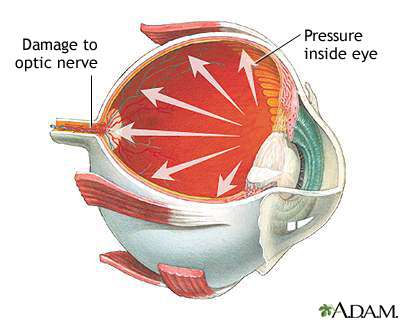Advanced Refractive Surgeries in AL: Crystal Clear Sight Without Glasses
Advanced Refractive Surgeries in AL: Crystal Clear Sight Without Glasses
Blog Article
Recognizing the Different Vision Modification Procedures Available for Clearer Sight
In the world of vision correction procedures, a wide variety of options exist to resolve refractive mistakes and give individuals with clearer sight. From the commonly recognized LASIK surgical procedure to less invasive procedures like PRK and implantable lenses, the area of ophthalmology provides a variety of methods tailored to match various requirements and choices. Each procedure comes with its own collection of factors to consider, advantages, and prospective dangers. Understanding the nuances of these vision improvement techniques is critical for making notified choices about one's aesthetic wellness. Allow's explore the complexities of these treatments and clarified the path to accomplishing improved vision quality.
LASIK Surgical Procedure
LASIK surgical treatment is a typical refractive treatment utilized to fix vision issues such as farsightedness, astigmatism, and nearsightedness - glaucoma service near me. This medical technique, which means Laser-Assisted sitting Keratomileusis, intends to reshape the cornea to improve just how light is concentrated on the retina, ultimately boosting vision clarity. Throughout the procedure, a thin flap is created on the cornea, and a laser is made use of to eliminate accurate amounts of cells to reshape it suitably. This reshaping enables light to be precisely focused onto the retina, remedying refractive mistakes.
One of the key benefits of LASIK surgical treatment is the fast improvement in vision experienced by patients. On the whole, LASIK surgical procedure is a preferred selection for people seeking a long-lasting service for their vision problems.
PRK Procedure
While additionally an usual refractive treatment, the PRK (Photorefractive Keratectomy) strategy varies from LASIK surgical treatment in its method to dealing with vision problems. In PRK, rather of producing a flap on the cornea, the external layer of the cornea, called the epithelium, is totally eliminated. This enables the laser to reshape the cornea to correct refractive errors such as farsightedness, astigmatism, and nearsightedness straight externally.

Despite the longer recovery time, PRK can yield superb outcomes in vision enhancement, making it a valuable choice for those that might not appropriate prospects for LASIK surgical treatment.
Implantable Lenses
In contrast to PRK where the cornea is improved straight, implantable lenses provide an additional method for fixing vision by inserting synthetic lenses inside the eye. This procedure is particularly advantageous for people with high levels of astigmatism, farsightedness, or nearsightedness who may not be ideal candidates for laser surgeries like LASIK or PRK.
Implantable lenses, also called phakic intraocular lenses, work by supplementing the eye's all-natural lens with a synthetic one. retina service near me. These lenses can be put before the all-natural lens (anterior chamber) or behind the iris and in front of the all-natural lens (posterior chamber) By readjusting the power and positioning of these lenses, ophthalmologists can efficiently remedy refractive errors and boost aesthetic skill
One my explanation advantage of implantable lenses is that they are detachable and exchangeable, offering adaptability for future modifications. However, just like any kind of operation, there are threats entailed, such as infection or cataract development. Individuals thinking about implantable lenses ought to speak with an eye treatment specialist to identify one of the most ideal choice based on their individual demands and eye health.
Corneal Rings
Corneal rings, also known as intracorneal ring sectors, are tiny, clear gadgets placed into the cornea look at this site to correct vision distortions such as keratoconus. Keratoconus is a problem where the cornea thins and bulges exterior, triggering vision to end up being altered. The insertion of corneal rings aids to flatten the cornea, enhancing visual skill and minimizing the irregular astigmatism created by keratoconus.
The treatment for placing corneal rings is minimally invasive and reasonably fast, usually executed as an outpatient treatment. During the surgical treatment, the eye doctor makes a small cut in the cornea and inserts the rings at a certain depth. Once in position, the rings assist to reshape the cornea, giving a smoother surface for light to enter the eye, which can cause clearer vision.
Corneal rings are taken into consideration a reversible treatment, as they can be gotten rid of or replaced if necessary. glaucoma service near me. While they might not totally eliminate the need for glasses or call lenses, corneal rings can substantially boost vision quality and total visual convenience for individuals with keratoconus or various other corneal irregularities
Refractive Lens Exchange
Following the improvement of corneal irregularities with treatments like corneal rings, one more vision modification strategy that can deal with refractive errors is Refractive Lens Exchange (RLE) RLE is an operation that entails replacing the eye's all-natural lens with a fabricated intraocular lens (IOL) to fix refractive mistakes such as presbyopia, nearsightedness, and farsightedness. This treatment is particularly helpful for people that may not be appropriate candidates for procedures like LASIK or PRK because of variables such as slim corneas or high refractive mistakes.

Verdict
In final thought, there are different vision correction procedures available to help individuals attain more clear view. LASIK surgery, PRK treatment, implantable lenses, corneal rings, and refractive lens exchange are all alternatives that can resolve various vision concerns.
In the world of vision modification treatments, a wide variety of choices exist to attend to refractive errors and provide individuals with clearer view.LASIK surgical procedure is an usual refractive treatment used to correct vision problems such as farsightedness, astigmatism, and nearsightedness.While also a typical refractive procedure, the PRK (Photorefractive Keratectomy) strategy varies from LASIK surgical treatment in its strategy to remedying vision issues.Following the improvement of corneal irregularities with treatments like corneal rings, another vision improvement strategy that can resolve refractive errors is Refractive Lens Exchange (RLE) LASIK surgical procedure, PRK treatment, implantable lenses, corneal rings, and refractive lens exchange are all alternatives that can address different vision problems.
Report this page